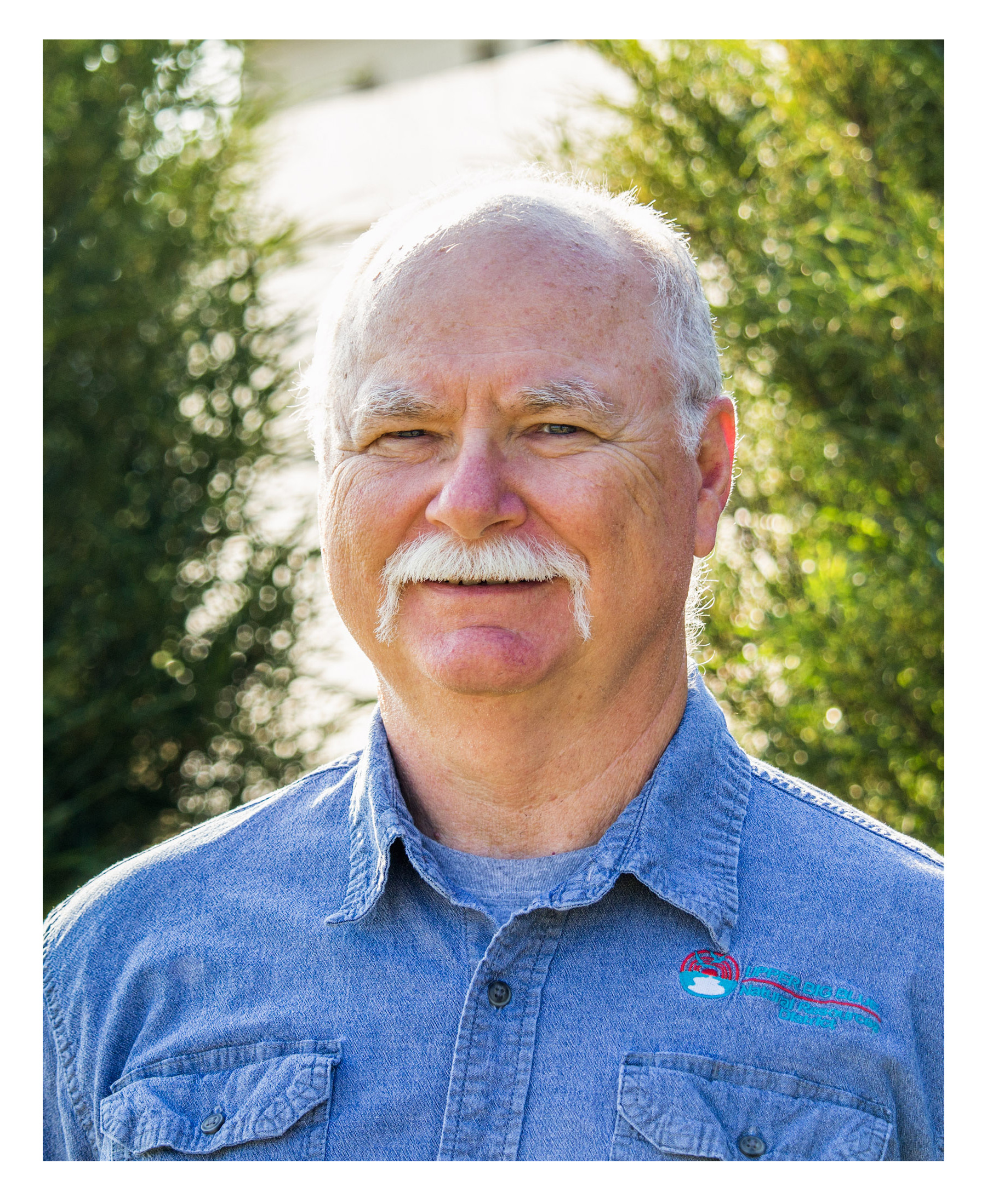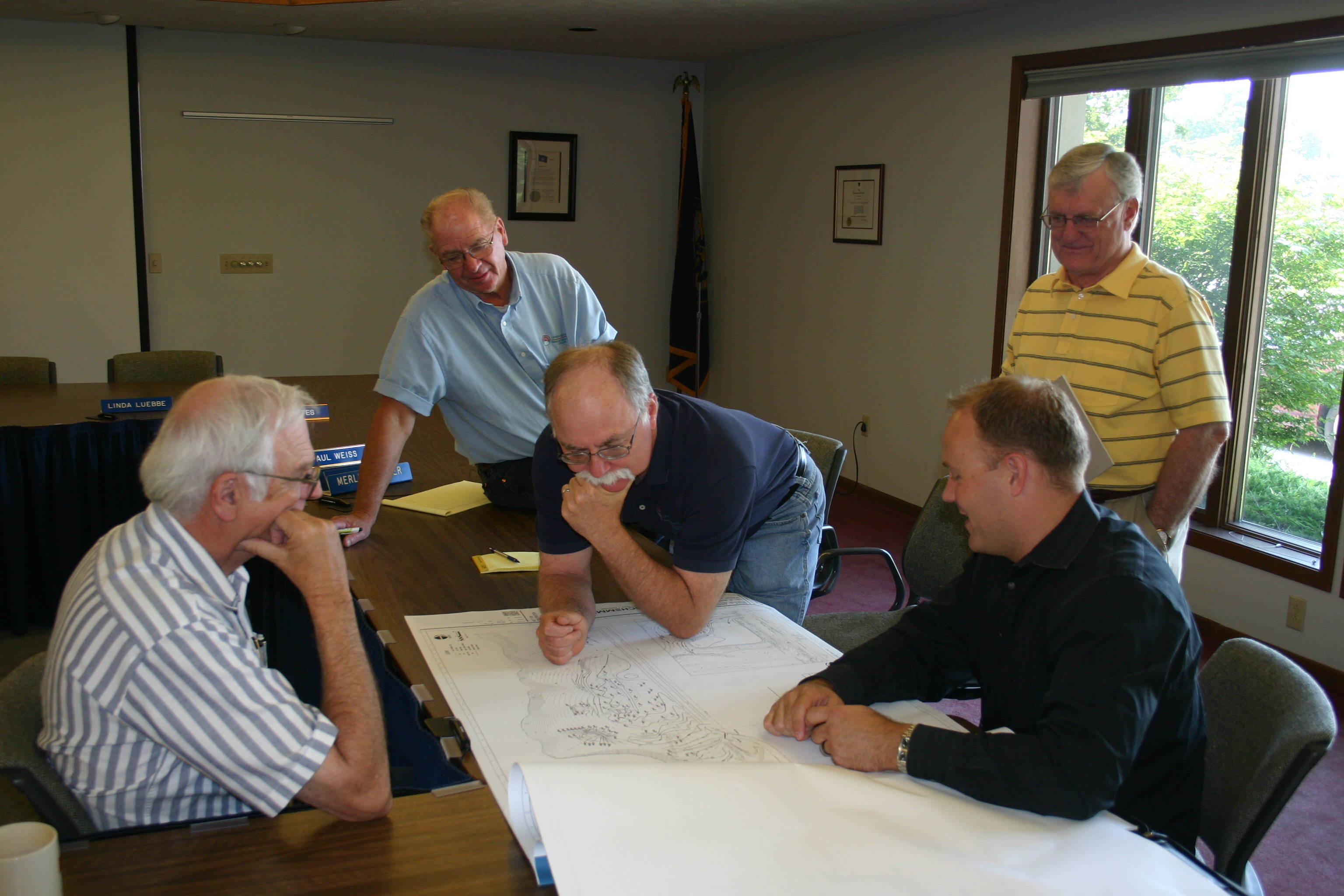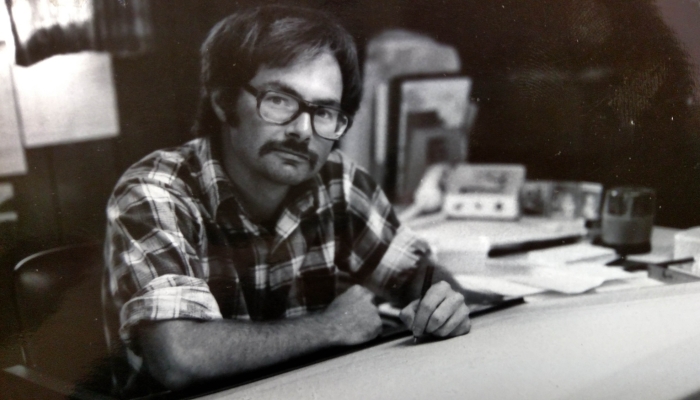Ball reflects on 45 years with the NRD
When Jeff Ball retires this summer, he will have reached a career milestone: 45 years of service as a lead engineering technician with the Upper Big Blue Natural Resources District.
This achievement is somewhat unexpected, considering it’s a job he never applied for.
 In 1978, Ball pursued a position as a technician with the Soil Conservation Service (which is now the Natural Resources Conservation Service, or NRCS, but at that time was also associated with the NRD). When he got to the interview, he met with NRD General Manager John Turnbull and Engineer Jay Bitner, who convinced Ball to take a similar position with the NRD instead. Ball would go on to work with Turnbull and Bitner for 35 years until their retirements. He appreciated Turnbull’s management style and support, as well as the many lessons he learned from Bitner. “He taught me a lot over the years to improve my skills. He taught me most how to look at things with a critical eye no matter what it was you were doing,” Ball said.
In 1978, Ball pursued a position as a technician with the Soil Conservation Service (which is now the Natural Resources Conservation Service, or NRCS, but at that time was also associated with the NRD). When he got to the interview, he met with NRD General Manager John Turnbull and Engineer Jay Bitner, who convinced Ball to take a similar position with the NRD instead. Ball would go on to work with Turnbull and Bitner for 35 years until their retirements. He appreciated Turnbull’s management style and support, as well as the many lessons he learned from Bitner. “He taught me a lot over the years to improve my skills. He taught me most how to look at things with a critical eye no matter what it was you were doing,” Ball said.
While many aspects of Ball’s job have changed through his four and a half decades of service, Ball’s dedication to effective stewardship of soil and water resources, as well as sound local governance, has never altered.
Nebraska’s NRDs were established in 1972, so Ball has been a part of the NRD system from its infancy. In those early days, the Upper Big Blue NRD staff was comprised of just six people and the efforts of the organization were mainly focused on addressing the groundwater level declines that had been documented since the 1950s. “Jay Bitner and I were mainly hired to build dams,” said Ball, “as many as we could, to store water to help replenish the groundwater and keep as much water in our district as possible.” The district currently maintains 47 dam structures and provides cost-share funding to landowners for private dam construction or renovation. Much of Ball’s time has been dedicated to dam inspection and maintenance, to protect the investment made in these multipurpose structures that have flood control, groundwater recharge, and wildlife habitat benefits.
Eventually though, “it became evident that the only thing that really replenished and filled the groundwater was rain,” said Ball. Thus, dam building became less of a priority, while monitoring and regulating the quality and quantity of water became a bigger concern.
Many things have changed through the years Ball reflected, most strikingly, the technological advances that have transformed his job. “When I was in the field and needed a question answered immediately, I would have to go find a phone at the nearest town,” he said. Then came truck radios and later cell phones, bringing speed and efficiency. “Survey tools have gone from transit and level to electronics and GPS,” he said, meaning painstaking work that was once done by a team can now be done by one person in a fraction of the time.

Similarly, when Ball first began working for the NRD, there was only one computer console in the office, which was used for modeling and was connected to a mainframe at the University of Nebraska. Once modeling runs were completed, someone would have to drive to Lincoln to pick up printouts. If they discovered an error in the data, they would have to start the process over. Today, this kind of task is done with much greater accuracy and convenience from the computer in Ball’s office—no driving to Lincoln required.
Ball has worked on a variety of projects through the years, from community trails in flood-prone areas, to storm sewers and drainage plans, to dam restoration. One of his favorite projects has been Bruce L. Anderson Recreation Area near York. The dam structure was originally built for a groundwater recharge study (hence the name Recharge Lake). Since its construction in 1990, it has been studied extensively to explore questions regarding groundwater quality and quantity. NRD staff have measured the inflow and outflow of water from the lake and the basins and their impact on groundwater. They also used the lake to study agrochemical runoff impacts on groundwater quality, and whether water collected in the lake could be remediated for chemicals (such as atrazine) and reinjected into the groundwater supply. This research lake would eventually be developed into the highest-use recreation area in the district. Ball was involved in the expansion of the park, including restrooms, a playground, RV camping pads, an amphitheater, and picnic structures.
“Every project has a story that brings its own unique challenges and benefits,” he said. As for the future? Ball has high hopes for the NRD, as well as his own ambitions. “Each NRD needs to be courageous and bold in the truth, steadfast in unified purpose, future thinkers, innovative, proactive, front runners who lead by example to protect … our natural resources. That is what it is all about,” he said.
Ball is looking forward to camping, gardening, travel, woodworking, church service, and plenty of time with grandkids in retirement, while reflecting on a job well done at the NRD.


